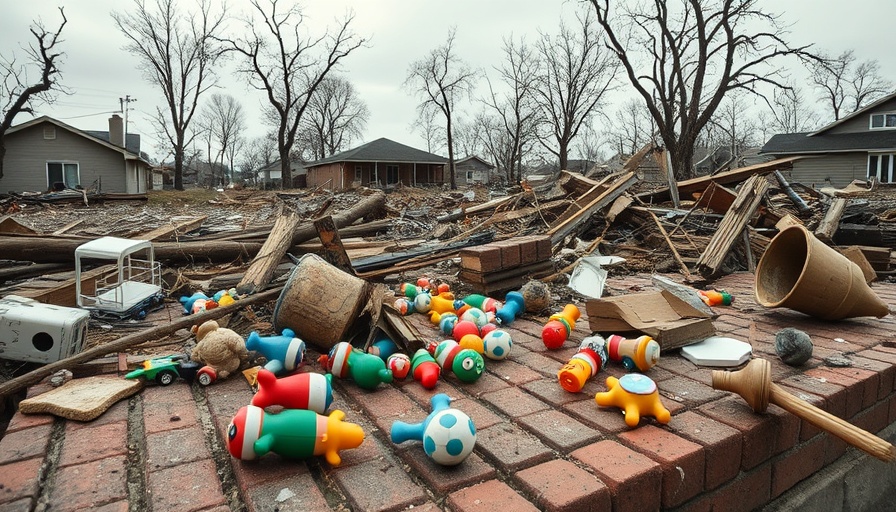
Catastrophic Weather Events Affecting Lives in Midwest and South
The heart of America is facing unprecedented weather challenges as deadly storms sweep through the South and Midwest. This week, these regions have been hammered by tornadoes and relentless rainfall, leaving a tragic toll of at least 20 lives lost and numerous communities devastated. The National Weather Service (NWS) has issued flash flood emergencies reflecting the severity of the situation, with parts of Missouri, Texas, and Arkansas heavily impacted. With waterways swelling rapidly, the state of emergency reflects an urgent need for residents to stay alert and prepared.
Historical Context: Tornado Alley and Flooding Trends
The incidents currently unfolding in the Midwest and South are not isolated. The region, colloquially known as "Tornado Alley," has a notorious history of severe weather patterns, marked by tornadoes during the spring months. However, this year, the combination of tornado activity and prolonged rainfall is causing substantial concerns. In the past, areas like Kentucky have witnessed devastating floods, such as the catastrophic events marked in July 2022 when many lost their homes.
Recent Storms: A Calculation of Destruction
With this latest round of storms, residents are reeling from the real impacts of flooding. Reports indicate that cities along the Ohio River, notably Louisville, are anticipating what could become one of the top ten flooding events in the city's storied history. As rainfall totals exceed a foot in areas like Kentucky and significant downpours continue across Arkansas and Missouri, many neighborhoods are left vulnerable to flooding. The local infrastructure has buckled under the pressure, with emergency protocols in place to evacuate towns threatened by the rising waters.
Social Connection: Resilience in Community
While the physical destruction is evident, the emotional scars that these disasters leave behind are deeply felt throughout communities. Neighbors are banding together, offering shelters, food, and support to one another in the face of adversity. As residents of rural Kentucky cope with the aftermath of the floods, the outpouring of community spirit serves as a stark reminder of the strength that can be found in unity during times of crisis. Such resilience is essential as fears grow for the families affected by recent deaths attributed to the flooding.
Impacts on Commerce: Disrupting the Economy
The ongoing weather events are not just a matter of personal tragedy; they also pose severe implications for the local and national economy. Major cargo transportation routes are significantly affected, with officials warning of shipping and supply chain delays emanating from high floodwaters across a corridor containing crucial hubs like Louisville and Memphis. Such disruptions could lead to widespread consequences that affect goods and services beyond just the immediate devastated areas. Economic analysts stress the importance of addressing these weather-related challenges swiftly, as they can ripple through numerous sectors.
Future Predictions: What Lies Ahead?
The immediate forecast indicates that the danger is far from over. Meteorologists warn that more severe storms could bring additional heavy rain, further exacerbating the risk of flooding in already saturated areas. This situation not only jeopardizes homes but also brings into question how local agencies can effectively respond to growing climate volatility. Efforts in local climatological research are becoming increasingly crucial to develop better tracking systems and preparedness strategies for future storms.
Call to Action: Stay Informed and Prepared
As we face the realities of increasing severe weather events due to climate change, it is essential for residents to stay informed and prepared. Monitoring local weather reports, understanding flood zones, and having an emergency plan in place can make a significant difference in how individuals cope with such disasters. Communities can work together to foster resilience and support systems, ensuring that when the next storm strikes, they are ready.
In conclusion, while the devastating impact of recent storms cannot be overstated, the unity and collaborative efforts among communities demonstrate the power of human resilience. By staying informed and prepared, individuals can better navigate the uncertainties of a changing climate and the challenges it brings.
 Add Element
Add Element  Add Row
Add Row 



Write A Comment